Domaine Philippe Vandelle
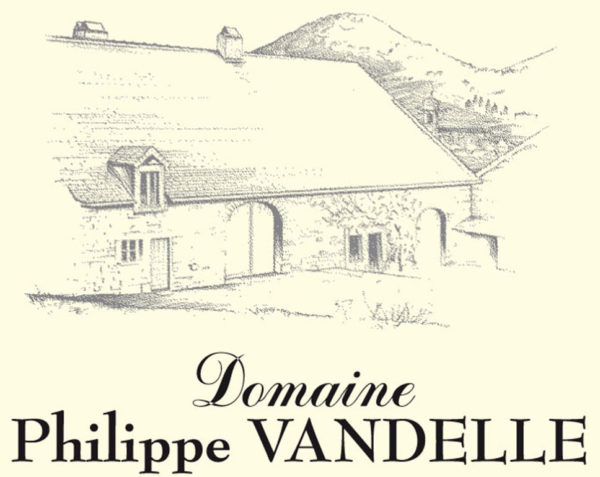
The Estate
Located on 13 hectares of AOC l’Étoile, Domaine Philippe Vandelle is a follower of “l’agriculture raisonnée” or sustainable agriculture, which requires compliance with strict specifications. More than 40 measures need to be met, such as product traceability, safety, waste management, soil management, and plant protection products. Under the control of the State, this qualification is validated by Qualité France SA and is valid for 5 years with an unannounced inspection.
Location
History of the Region
The vineyards extend from north to south of the area on a 100km strip called Revermond or Bon-Pays. They rest on a limestone subsoil with a predominance of blue, gray, or red marl. In 1936, Arbois, Home of Pasteur (father of modern l’oenologie), became the first AOC in France.
The Vines
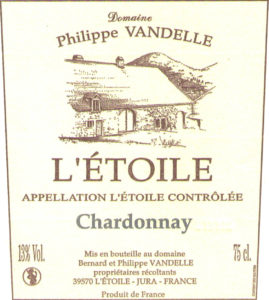
Chardonnay L’Étoile
Average Age of Vines: 25-35 years
Soil: Clay and limestone with blue, gray, and red marl
Vinification: Thermo regulated stainless steel tanks at 25°C
Aging: In oak barrels for 6 months
Annual Production: 8,000 bottles
Grape Varieties: 100% Chardonnay
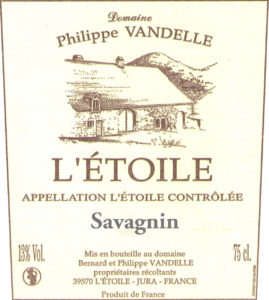
Savagnin L’Étoile
Grape Varieties: 100% Savagnin
Average Age of Vines: 30-45 years
Soil: Clay-limestone marl, gray lias
Vinification: Thermo regulated stainless steel tanks at 25°C
Aging: In oak barrels for 3 years
Annual Production: 5,500 bottles
Food Pairings: Goes wonderfully with crayfish, white meat, fondue, stew, and cheeses.
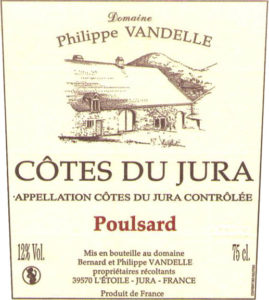
Côtes du Jura Poulsard
Appellation: Côtes du Jura
Grape Varieties: 100% Poulsard. Poulsard, or Ploussard as it is sometimes called, is a red French wine grape variety from the Jura wine region. Poulsard is a variety that is often used for blending with other red grape varieties due to its pale red color and lighter body, but here it is allowed to shine with its delicate yet intense flavors.
Age of the Vines: 30 years old
Soil: Clay-limestone
Vinification: Thermo-regulated stainless steel vats
Aging: In stainless steel vats
Production: 3,500 bottles
Food Pairings: Serve cool. Pairs well with smoked cheeses, charcuterie, salads, etc.
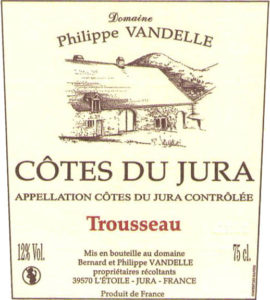
Côtes du Jura Trousseau
Appellation: Côtes du Jura
Grape Varieties: 100% Trousseau. Trousseau is an older red wine grape with origins in eastern France. Wines made from Trousseau typically have a deep red color, lively acidity, and red berry notes.
Age of the Vines: 30 years old
Soil: Clay-limestone
Vinification: Thermo-regulated stainless steel vats
Aging: In stainless steel vats
Production: 3,500 bottles
Food Pairings: Serve at room temperature. Pairs well with smoked and/or aged cheeses, charcuterie, red meats, duck, etc.
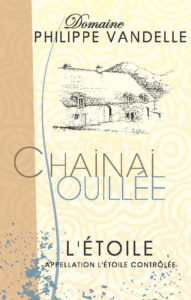
Savagnin l'Étoile Chainai Ouillée
Appellation: L’Étoile Blanc
Lieu-dit: Chainai
Grape Varieties: Savagnin
Average Age of the Vines: 30 years old
Soil: Clay-limestone and gray marl
Vinification: Stainless-steel tanks hermoregulated at 22 °C.
Aging: 6 months in barrels. Ouillage is employed, which is the process of topping off a barrel with additional wine to fill the ullage (air inside the barrel) created by evaporation.
Production: 3,300 bottles
Serving Suggestion: Serve at cellar temperature, paired with shellfish and other seafood.
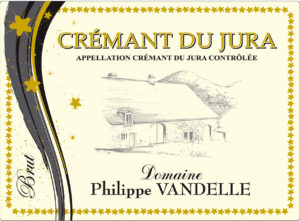
Crémant du Jura Brut
Grape Variety: 100% Chardonnay
Tasting Notes: Light color, with a few golden reflections around the fine bubbles. The bouquet offers floral notes of hawthorn and citrus fruit. The palate is generous, mineral and saline, linked to the terroir of l”Etoile, with aromas of white fruits, green apples and brioche.
Food Pairings: Perfect as an aperitif, or when paired with desserts.
Serving Temperature: 8°C
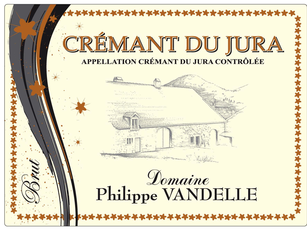
Crémant du Jura Brut Rosé
Appellation: Crémant du Jura Rosé
Grape variety: Pinot Noir
Age of the vines: 15 to 20 years
Soil: clay-limestone
Number of bottles produced for this cuvée: 3,500 bottles.
Vinification: Thermo regulated at 18 °C. Three-day pre-fermentation maceration.
Food Pairings: It goes perfectly with all festive moments as an aperitif or dessert.
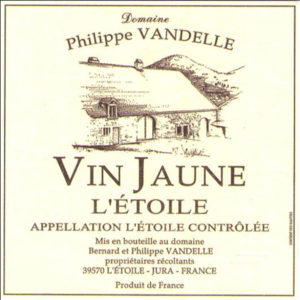
Vin Jaune L'Étoile
Overview: This is the most prestigious wine of Jura. It is produced exclusively from the harvest of Savagnin cultivated on the marls of the Lias. It comes in a special bottle called the “Clavelin” whose origin is very old. In fact, in 1506 Marguerite de Bourgogne granted a concession to the Vieille-Loye glassworks.
Harvest: The grapes are harvested at peak ripeness, when they are exceeding 13° potential alcohol.
Aging: A minimum of 6 years aging in barrels, without racking or topping up.
Tasting Notes: This Jura wine is obviously very unique. Yellow color, with a powerful nose and aromas of nuts, spices (curry, ginger).
Food Pairings: Goes well with escargot, creamy dishes, exotic cuisines, cheeses, etc. It is used a lot in cooking and the coq au vin jaune et aux morilles is a delicious example.
Serving Temperature: To be drunk at room temperature (14-16°C).


